Code of the nation: what does the symbolism of Ukrainian embroidery mean and differences in different regions?
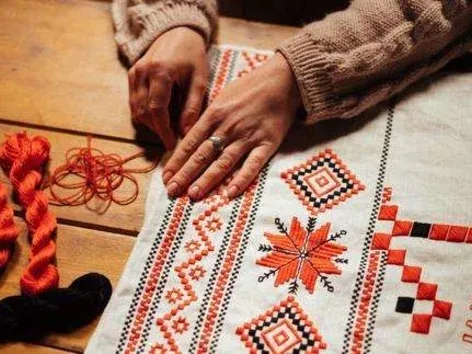
Every year in May, Ukrainians celebrate Vyshyvanka Day, a special holiday dedicated to the national dress of the Ukrainian people. Embroidery, symbolizing our cultural wealth, has many patterns and sewing techniques. Learn more about the uniqueness of embroidery in different regions of Ukraine
In 2024, Vyshyvanka Day has a special significance, as it falls during a period of full-scale war. This date unites Ukrainians by celebrating our culture and supporting national symbols, as well as revealing the truth and destroying myths.
According to tradition, World Vyshyvanka Day is celebrated annually on the third Thursday of May. This year, the holiday falls on May 16.
Read more about the history of the holiday, interesting traditions and facts in our article.
Vyshyvanka Day 2024: differences in embroidery in Ukrainian regions
Ukrainian embroidery is called the "code of the nation," and these are not just pretty words. Depending on the historical region of Ukraine, the details and themes of the embroidery patterns differ.
Each part of Ukraine can be proud of its unique embroideries, which differ in styles, colors, embroidery methods and patterns.
Zhytomyr region
In the Zhytomyr region, the most commonly used techniques are under-stitching and small cross-stitch. Geometric shapes, such as crosses, rhombuses, circles, zigzags, and especially rosettes, were frequently used, having a deep symbolic meaning. An embroidered shirt decorated with these figures was considered a protective amulet against negative influences. Floral and vegetal ornaments, such as periwinkle and birch, as well as motifs of hops, grapes, rosewood, apple trees, and leaves were also popular.
Kyiv region
In the Kyiv region, geometric patterns and stylized floral motifs were embroidered in white, coral red, or black, with white with splashes of green and red being particularly popular. Stylized grape bunches, hops, diamonds, and other geometric shapes were often found among the embroidery elements.
Vinnytsia region
In the Vinnytsia region, embroideries have always impressed with their variety of colors. Craftsmen used a variety of techniques and styles to create patterns: nyz, cross stitch, painted embroidery, overlay, cutting, and various types of lace. Contour seams were used to frame and connect individual elements of the ornament on the shirt.
Lviv region
In the Lviv region, embroidery was distinguished by its unique lightness and transparency, which was created by the white space between the elements of the pattern. It resembled a thin lace, and the embroidery, made mainly with a cross and stem stitch, created the impression of a fine web of black flowers that were combined with red, yellow, green, and blue.
Chernivtsi region
In the Chernivtsi region, the oldest examples of embroidery were made in one color, often white. They were embroidered using various techniques, including satin stitch, small cross, stapling, and twisted stitch. Transverse embroidery with small geometric elements was typical, as well as large floral motifs such as bouquets of roses and images of birds.
Volyn region
This region was characterized by the rhythmic repetition of various geometric shapes, such as stars, rhombuses, and broken lines. Small elements intertwined with each other to form harmonious patterns. Among all the colors, red was the most common, and blue and black were also used.
Dnipropetrovska oblast
In Dnipropetrovska oblast, ancient and classical embroidery techniques were preferred, including low and openwork lace. Cross-stitch embroidery mostly featured geometric or floral motifs, which acquired a geometric character. The cuffs of the sleeves and the neckline were decorated with colored threads and black pleating. Red and black colors prevailed in the embroidered men's shirts.
Zakarpattia region
Transcarpathian embroidery is known for its incredible variety of colors and density. More than a dozen different shades were traditionally used here, and almost every village had its own favorite range. The most common techniques were nyzynka, curly stitch, straight and oblique stitch. The main geometric shapes were a rhombus decorated with other elements, as well as "kryvulki" (zigzags).
Zaporizhzhia region
In the Zaporizhzhia region, men's Chumak shirts, which were known throughout Ukraine, had wide sleeves, and embroidery was usually limited to the collar. In this region, all the basic geometric shapes and their combinations were used, for example, circles symbolizing the sun, often with rosettes in the middle and composed of diamonds.
Ivano-Frankivsk region
As for the Ivano-Frankivsk region, embroidery here is characterized by clear geometric shapes that are often combined into one wide line to form a dynamic ornament. The ancient techniques of "rolling" and "torsion" are widespread here, and they are quite complex in execution. Much attention was paid to decorating the sleeves, where one could see a combination of many embroidery techniques: from "white on white" to "painted" elements, which are completely "painted" with threads.
Kirovohrad region
In the Kirovohrad region, ancient embroideries often featured symbols that reflected early agricultural beliefs. Embroidery motifs also included symbols, such as the two-headed eagle, which reflected both masculine and feminine essence. Later, lush, multi-colored floral and geometric ornamental motifs, which included images of flowerpots, flowers, leaves, and buds, became popular and characteristic of the region's embroidery.
Luhansk region
In the Luhansk region, embroideries stood out for their polychrome and the impression of relief created by using coarse thread and a combination of threads of different textures. Traditionally, cross-stitch and satin stitch techniques were used to create embroideries here.
Donetsk region
In the Donetsk region, the combination of red and black colors on a light (white) background was popular. Embroideries were decorated with lace and cutouts. Floral motifs usually included lush flowers, whole bouquets and trees, as well as images of birds. Here, in particular, embroidery was done using various techniques, including yavorivka and nyzynka.
Mykolaiv region
In the Mykolaiv region, women's shirts had special details, such as a quadrangular neckline and loose, ungathered sleeves at the wrist. The embroidery of these shirts was striking with stylized floral motifs, such as pine trees, oak leaves and hop cones, various flowers and flowering branches. Interestingly, the embroidered lines used as delimiting components had a symbolic meaning, they reflected the boundary between good and evil or represented the earth.
Odesa region
In the Odesa region, a characteristic feature was a standing wide collar, which was densely gathered in small "wrinkles" and surrounded by a thin scar. The upper edge of the sleeves was gathered, and the lower part was embroidered with a geometric floral pattern using the cross-stitch technique. The main colors used for embroidery were mainly red, black, blue, and yellow. In addition, the edges of the sleeves were decorated with a narrow strip.
Where to go to get acquainted with the unique cultural traditions of Ukraine? We tell you here.
Poltava region
In the Poltava region, embroidery was characterized by delicate colors and the use of pastel tones. Usually, this embroidery consists of white-on-white geometric ornaments associated with frosty patterns, as well as combining them with floral motifs.
Rivne region
In the Rivne region, simple geometric patterns in red with the addition of blue prevailed. Women's shirts were often embroidered with only red border and a very simple ornament made with red thread on a white or gray linen background. The embroidery of this region was characterized by exquisite simplicity and clarity of composition.
Visit Ukraine on social media: Telegram | YouTube | Instagram | Facebook | Twitter | TikTok
Sumy region
In the Sumy region, embroidered shirts were mostly of the Poltava type, characterized by the use of white threads in satin stitch, cutting, piecing, and various types of lace. The embroidery was based on geometric and floral motifs, and the zoomorphic elements were dominated by images of birds such as eagles, swans, ducks, and pigeons.
Ternopil region
In the Ternopil region, embroidery masters preferred geometric patterns and rich dark colors. Longitudinal oblique stripes with repeating elements were also characteristic. The viburnum motif, often depicted with berry branches between two birds, was typical for this region.
Kharkiv oblast
In the Kharkiv region, shirts were embroidered with multicolored thick thread, which gave the ornament relief and expressiveness. A special feature of embroideries was polychrome patterns made with a half-cross or a cross.
Kherson region
In the Kherson region, embroideries were characterized by floral and floral ornaments that appeared in the mid-nineteenth century. Among the common symbols was the "World Tree," which personified the ancestor, Mother Earth. Symbolic images of animals such as a cuckoo, rooster, horse, and deer were also common. A characteristic feature was embroidery with black threads and the practice of white-on-white embroidery.
Khmelnytskyi region
In the Khmelnytsky region, the ornaments of Podillia embroidery often consisted of one color - black, with red, blue, yellow, or green embellishments. Vyshyvankas had a single-color ornament, usually red or black, but also two- or three-color ornaments. The characteristic elements were cutouts and geometric lines.
Cherkasy region
In the Cherkasy region, complex geometric patterns were formed by small stitches, and the horizontal placement of patterns on the sleeves gave the shirts a unique look.
Chernihiv region
In the Chernihiv region, embroidery was often done with white threads with red and black embellishments, creating geometric or floral ornaments. To enhance the expressiveness of the embroidery, two or more types of stitches were often used, such as transparent and satin stitches, and openwork embroidery was practiced.
Crimea
In the Crimean Autonomous Republic, the embroidery of the Crimean Tatars is striking in its contrasts and differs from Ukrainian traditional embroidery. It contained floral ornaments with delicate colors, and each flower had its own symbolic meaning.
The meaning of symbolism and colors of Ukrainian embroidery
The colors of Ukrainian vyshyvanka have a deep symbolic meaning, reflecting various aspects of the life, faith and culture of the Ukrainian people:
• Red is the color of the sun, symbolizing good luck, protection, love and passion. It can also represent energy and firepower.
• Green is considered to be a symbol of birth and growth, the rebirth of nature and the fertility of the earth.
• Yellow is associated with solar energy, life, joy, wealth and prosperity.
• Blue is a symbol of feminine energy, peace, harmony, as well as water and sky.
• White is the color of purity, holiness, and innocence. White shirts were traditionally worn by unmarried girls.
• Black can mean pain and suffering, negative energy, and death. Black embroidered shirts were traditionally worn by the dead, symbolizing mourning and the memory of deceased relatives.
Some of the most common symbols of Ukrainian embroidery:
- Sun and water: The eight-pointed star and wavy lines symbolize the sun and water, respectively. They serve as protection from evil forces and express faith in the life-affirming power of nature.
- A rhombus with a dot: symbolizes fertility and the desire to give birth to new life. This symbol was often found on the clothes of young couples who dreamed of children.
- Viburnum and oak: the viburnum represents the sun, moon and stars, and the red color of its berries symbolizes the blood of the nation and the immortality of the family. Oak symbolizes masculine strength and development.
- Grapes: a symbol of happy family life, family happiness and prosperity.
- Periwinkle and hops: symbolize youth, determination and development, and are also depicted on clothes for young boys and girls.
- Red poppy: it is considered a family talisman and protection from evil, and can also symbolize the memory of fallen soldiers.
- Rose and sunflower: the rose represents love and mercy, and the sunflower represents life, energy, and happiness.
- Images of animals: a cuckoo, an owl, a rooster, a butterfly, a hare, and other animals can have different symbolic meanings, such as wisdom, protection, energy, etc.
We remind you! Earlier, we wrote about the role of Ukrainian national clothes in the global fashion industry. Read more about embroidery in the collections of global clothing brands in our article.
Want to know more? Read the latest news and useful materials about Ukraine and the world in the News section.
We recommend purchasing it for a safe and comfortable trip to Ukraine:
Visit Ukraine Insurance – safe travel in Ukraine (insurance covering military risks);
Visit Ukraine Legal advice – comprehensive legal support on entry to Ukraine;
Visit Ukraine Tickets – bus and train tickets to/from Ukraine;
Visit Ukraine Tours – the largest online database of tours to Ukraine for every taste;
Visit Ukraine Hotels – hotels for a comfortable stay in Ukraine;
Visit Ukraine Merch – patriotic clothing and accessories with worldwide delivery.
© 2018-2024, Visit Ukraine. Use, copying or reprinting of materials on this site is permitted only with a link (hyperlink for online publications) to Visit Ukraine.
All rights reserved.
Recommended articles
2 min
For refugees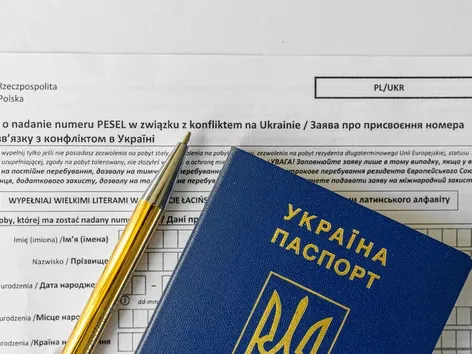
The Polish Sejm has adopted amendments to the law on assistance to Ukrainian citizens in connection with the war. Find out how the rules of stay of Ukrainians in Poland will change and what innovations in obtaining and using PESEL UKR await refugees from Ukraine
16 May. 2024
More details2 min
For refugees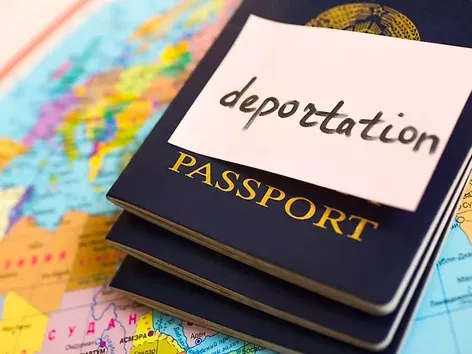
When Ukrainian citizens can be deported from the EU: current rules and conditions
Ukrainian citizens can be deported from the European Union for various reasons. One of the most common reasons is violation of immigration laws. In addition, Ukrainian citizens can be deported for violating residence rules. Learn more about what you should know about deportation from the EU
15 May. 2024
More details3 min
Entry rules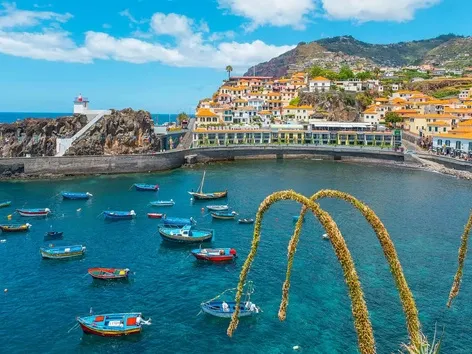
Travel to Ukraine from Portugal in 2024: convenient routes and entry rules
Currently, traveling to Ukraine is complicated due to the lack of air travel, but you can still get there comfortably by land. Here are the most convenient routes to Ukraine, current entry rules, and important nuances you need to know before traveling
16 May. 2024
More details2 min
War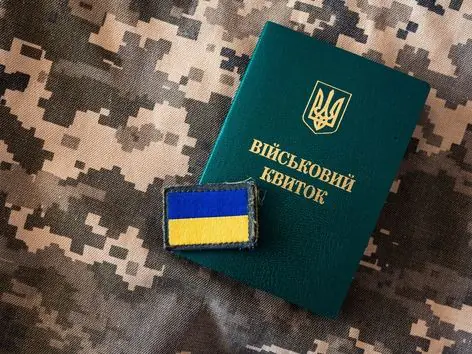
Who needs to update their military registration data in the TSC and how to do it?
The President of Ukraine has signed a new law that provides for a number of changes in mobilization processes. From now on, persons liable for military service will be able to update their data both during personal visits and online. Find out more about who needs to update their data in the CMC and how to do it after the new law comes into force
16 Jul. 2024
More details

